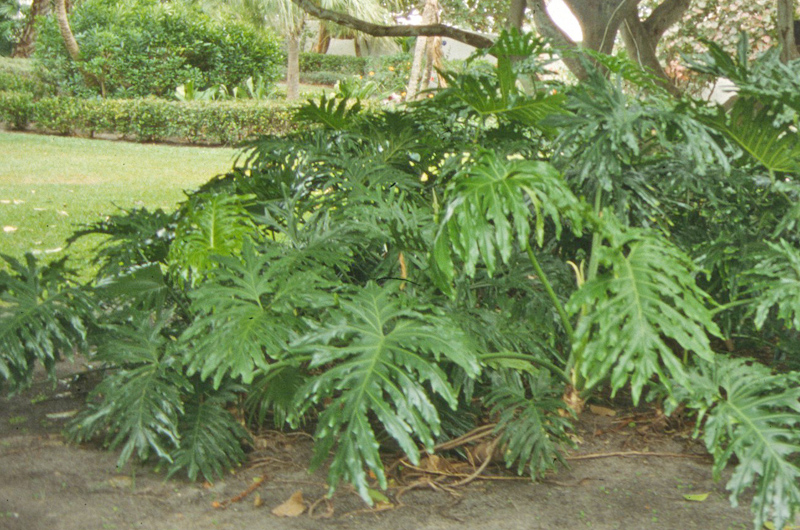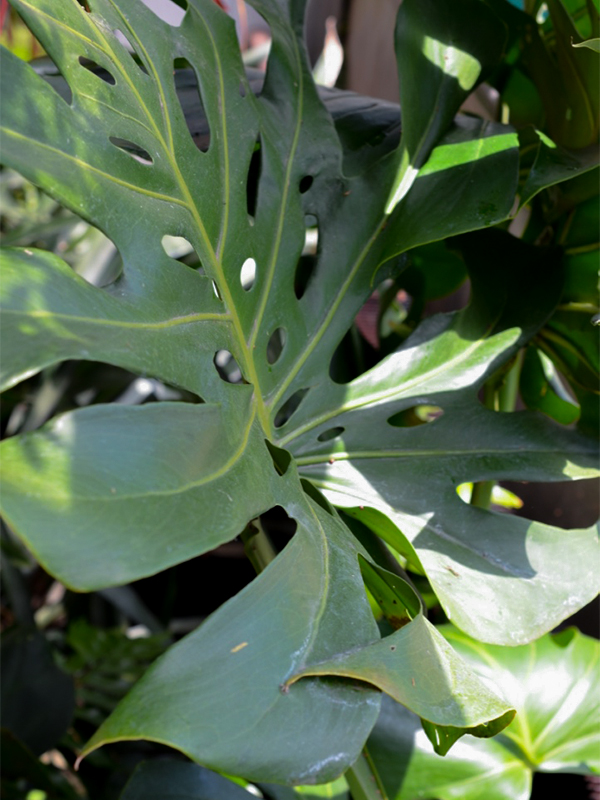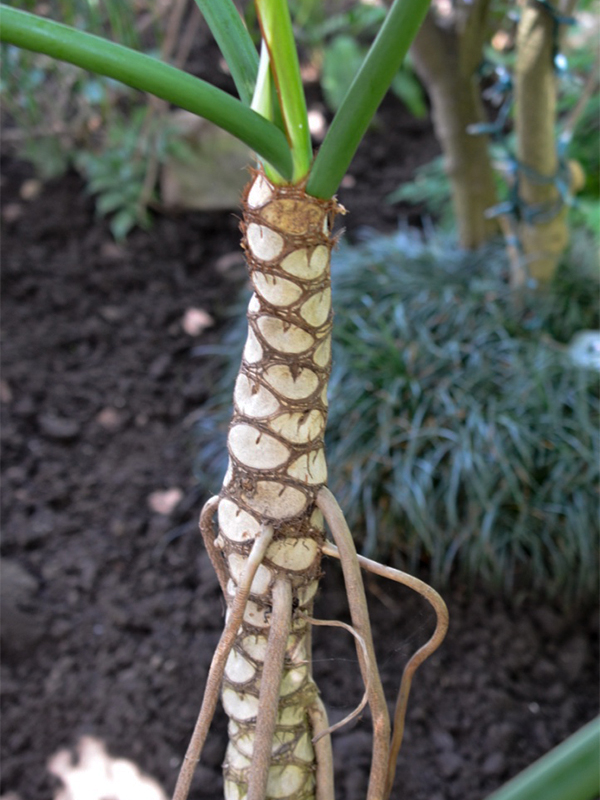| General Description | A tropical plant grown as a houseplant in temperate climates. |
| ID Characteristic | Large, distinct, deeply dissected foliage. |
| Shape | Loosely rambling and epiphytic in nature. |
| Landscape | Houseplant or as a feature in large indoor plantings such as shopping malls. In tropical zones it is used as a major landscape plant often in place of shrubs. |
| Cultivation | Best grown in partial to full shade with rich, moist soil. Does not tolerate salt build up so flush soil regularly or used distilled water for irrigation. |
| Notable Specimens | Centennial Conservatory, Thunder Bay, Ontario, Canada. |
| Bark/Stem Description | The trunk is relatively thick and woody with characteristic “eye-drop” leaf scars. It can produce aerial roots that absorb water and nutrients. |
| Leaf Description | Leaves are simple, large, deeply lobed, and attached to long, smooth petioles. They can grow up to 1.2 m long. |
| Flower Description | The small, non-petalled flowers are on a spadix that is enclosed within a spathe. |
| Colour Description | Leaves range from medium green to dark green. |
| Texture Description | Leaves are glossy. |


